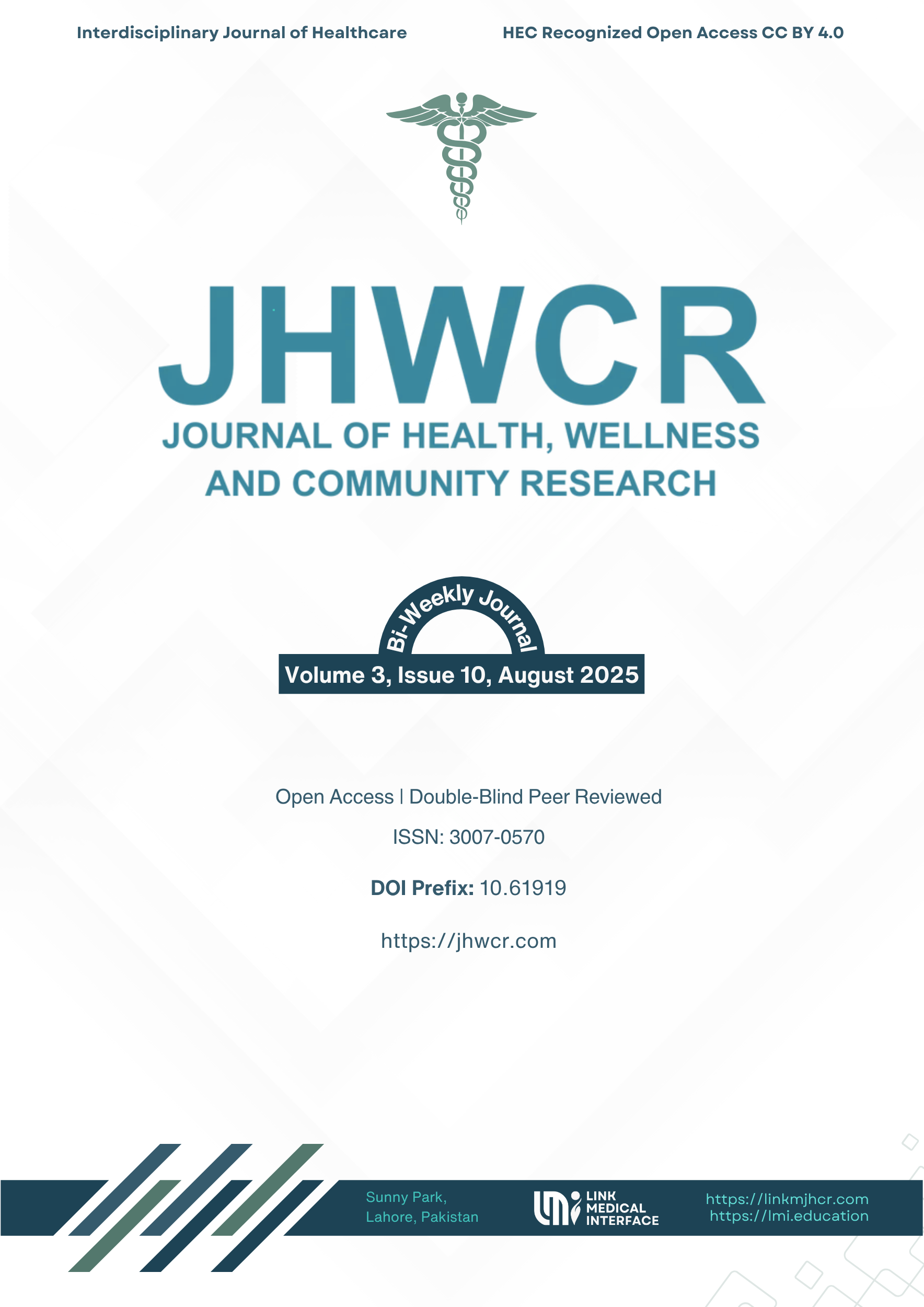Association of Lumbopelvic Mobility with Pain and Functional Disability among Nursing Staff
DOI:
https://doi.org/10.61919/3tdb1k64Keywords:
Lumbopelvic mobility, low back pain, functional disability, nursing staff, occupational healthAbstract
Background: Lumbopelvic mobility is critical for postural stability, efficient movement, and injury prevention. Nursing staff are at high risk for low back pain (LBP) and functional disability due to the physical demands of their occupation, yet limited research has examined the interplay between mobility, pain, and disability alongside occupational and demographic factors. Objective: To assess lumbopelvic mobility, pain intensity, and functional disability in nursing staff, and to determine their associations with age, working hours, and body mass index (BMI). Methods: A cross-sectional study was conducted in government hospitals in Lahore, Pakistan, from June to July 2024. Using convenience sampling, 146 nurses aged 25–40 years were assessed with Schober’s test for lumbopelvic mobility, the Numeric Pain Rating Scale (NPRS), and the Oswestry Disability Index (ODI). Data were analysed with descriptive statistics and chi-square tests. Results: Mean Schober’s score was 3.55 cm, NPRS 4.85, and ODI 8.92. Lumbopelvic mobility was significantly associated with pain (p<0.001) and disability (p<0.001), but not with age (p=0.399) or BMI (p=0.430). Severe mobility restriction corresponded with marked increases in both pain and disability. Conclusion: Occupational strain in nursing is a key determinant of impaired lumbopelvic mobility, highlighting the need for ergonomic interventions and preventive exercise programs.
Downloads
Published
Issue
Section
License
Copyright (c) 2025 Fiza Irtaza, Ujala Batool Raza, Saba Riaz, Mariam Afzal, Laiba Babar, Naymel Tahir (Author)

This work is licensed under a Creative Commons Attribution 4.0 International License.


